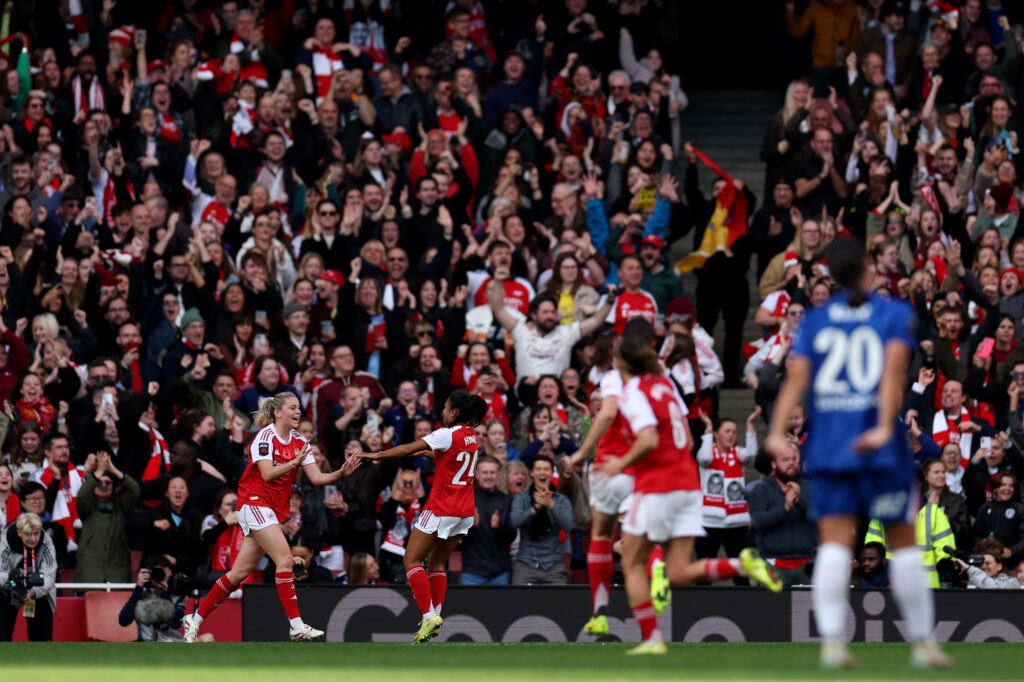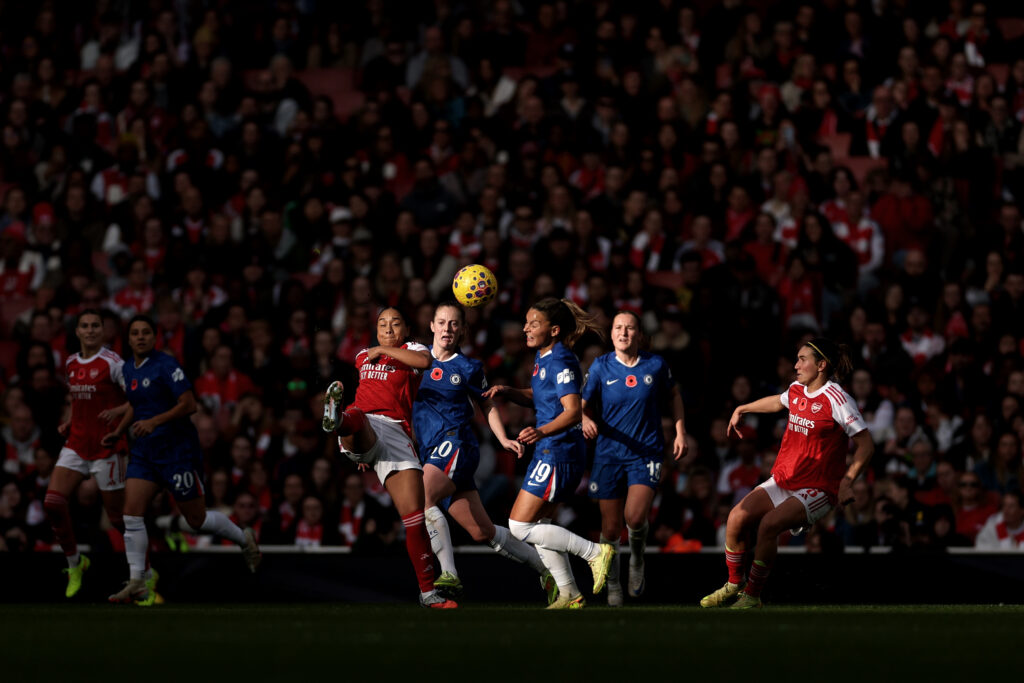Five key incidents during Arsenal women’s draw with Chelsea highlight how the lack of VAR and video support left major decisions unchecked in a game that could prove crucial in the title race.

The Arsenal v Chelsea draw this weekend was marred by controversy, with several refereeing decisions, that appeared wrong, and might have cost Arsenal two crucial points in the title race. I only say might, because if you’ve ever watched Back to the Future, you’ll know that when the timeline changes at one key moment, everything that follows becomes unpredictable.
For example, if Stina Blackstenius’s equaliser had been allowed, the score would have been 1-1, momentum would have shifted to Arsenal, and they could easily have gone on to win. Equally, a defensive slip or rash tackle could have changed everything again. Football is decided on such fine margins, but this was a match where technology could have made all the difference.
Here are the five key moments that might have changed the story of the game, starting with two potential red card incidents.

Minute 64. Victoria Pelova launched into a full-blooded, studs-up tackle on Keira Walsh, for which the referee showed a yellow card. A VAR check for a possible red might have taken place depending on who was in the VAR booth that day, and a red card would not have been a scandal if the referee had been asked to review the incident.
Minute 90. During an Arsenal counter-attack through the middle, Olivia Smith and Sandy Baltimore were running together when Baltimore appeared to catch Smith, possibly in the face, with her arm or shoulder. It’s unclear if the contact was forceful enough for a red card, but it’s certain that none of the officials saw it.
The referee was tracking the ball during the attack, the assistant was focused on the last Chelsea defender, and the fourth official was dealing with the tense technical areas.
It was an incident missed by all four officials and one that could easily have warranted review. Technology would have helped here. A closer look at the point of contact and the strength of the hit could have determined whether it was yellow or red, and the referee could have brought play back for an Arsenal free kick.

Minute 53. Blackstenius’s disallowed goal for handball was the game’s biggest talking point.
Some fans even argued it shouldn’t have been a corner in the first place, with debate over whether the ball came off Caitlin Foord or Lucy Bronze. Unfortunately, even with VAR, that phase wouldn’t have been reviewed, which highlights another flaw in the system.
The referee claimed to have seen a handball that no one else noticed. Watching the replay, you can see why she might have thought that, as Blackstenius had her arms tight to her sides before extending them slightly, which could have looked suspicious in real time.
But the ball never touched her arms.
It’s a clear example of where technology would have made a difference. You wouldn’t even need full VAR – Football Video Support (FVS) would have been enough. Renée Slegers could have used a challenge to force a review, and the referee would have been compelled to check the footage and make the right decision.
Minute 87. Frida Maanum crossed for Alessia Russo, who volleyed the ball on target. Hannah Hampton got a hand to it but couldn’t keep it out, and the goal was given. However, there was an offside suspicion, though no flag came from the assistant referee.
A VAR check would have been automatic as it was a tight call. The referee had no clear view and relied entirely on her assistant. If Russo was offside, the goal would have been ruled out, leaving Arsenal 1-0 down with only minutes to play.
Minute 90. Maanum appeared to score a dramatic winner, but the flag went up immediately for offside. The decision came from the assistant referee rather than the referee herself, who trusted her colleague. TV replays were inconclusive, and VAR, or semi-automated offside technology (SOAT), would have provided clarity.
It’s exactly the kind of situation where technology could have prevented controversy. Two major calls in the final minutes left everyone guessing, and neither can be settled without the tools modern football already has.
You would hope that funding for FVS or VAR can be implemented next season so that key games like Saturday’s are not decided by officiating errors again.
In the end, a draw wasn’t a total loss for the Gunners. Arsenal actually climbed one place in the table after Tottenham lost away to London City Lionesses, and they gained a point on Manchester United, who were beaten at home by Aston Villa.
Manchester City now top the table with 21 points, Chelsea are second with 20, Manchester United third with 17, and Arsenal fourth with 15, six points behind the leaders, and still with plenty of work to do to stay in the title race.
